Abstract:
Against the backdrop of the explosive growth of 5G, large AI models, and computing power clusters, optical modules—serving as the core transmission medium for data centers and communication networks—are facing key challenges such as bandwidth leaps, power consumption optimization, and multi-dimensional integration. Traditional packaging processes (e.g., silver epoxy mounting, eutectic soldering, and thermocompression bonding) are increasingly constrained by bottlenecks including insufficient precision, low thermal management efficiency, and high high-frequency signal loss. Leveraging advantages such as high processing precision, non-contact localized heating, and easy integration with high-speed closed-loop temperature control systems and process control, Laser Assisted Bonding (LAB) technology is reshaping the technical boundaries of optical module manufacturing. This paper systematically analyzes the technical evolution path of optical communication modules and deeply explores the core value of LAB technology and its application prospects in optical module manufacturing.
I. Evolution of Optical Module Technology: A Four-Stage Leap from Gbps to Tbps
1. First Generation (1990s–2000s): Low-Speed Interconnection and Simple Packaging
From the late 20th century to the early 21st century, optical modules primarily relied on multimode fibers and LED light sources for communication, with transmission rates typically not exceeding 1 Gbps. Packaging mainly utilized TO-CAN (Transmitter Optical Sub-Assembly), while soldering processes depended on manual soldering or Hotbar technology. These modules were mainly applied in local area networks (LANs) and telecom backbone networks during the early internet era. However, constrained by technological and process limitations, they suffered from large size and low integration, struggling to meet the growing demands for miniaturization and high performance in subsequent communication technologies.
2. Second Generation (2010–2015): High-Speed Development and Standardized Packaging
Entering the 2010s, single-mode fibers and VCSELs (Vertical-Cavity Surface-Emitting Lasers) became increasingly prevalent, significantly boosting optical module transmission rates to 10G–40G. Packaging technology also advanced, with the adoption of SFP+/QSFP packaging increasing port density by fourfold. Meanwhile, Flip Chip technology began to be introduced into optical module manufacturing. However, during this period…
3. Third Generation (2016–2020): Silicon Photonics Integration and the 400G Era
From 2016 to 2020, silicon photonics enabled the integration of optoelectronic chips with CMOS processes, driving optical module transmission rates to break through 400G. This era adopted PAM4 modulation and COB (Chip-on-Board) packaging technology, with thermocompression welding precision improving to ±10μm (passive alignment). Nevertheless, core bottlenecks persisted in optical module manufacturing during this phase: On one hand, high-frequency signal loss limited further performance enhancement of 56Gbaud PAM4; on the other hand, the ultra-high alignment precision required for silicon photonics coupling made it difficult for traditional processes to meet these demands, resulting in limited production yields and constraining large-scale manufacturing and application of optical modules.
4. Fourth Generation (2021–Future): The Tbps Era and Multi-Dimensional Integration Revolution
With the continuous advancement of communication technologies, optical modules are entering the Tbps era and undergoing a multi-dimensional integration revolution. Current manufacturing still primarily uses silver epoxy mounting, which has relatively limited thermal conductivity, leading to higher chip junction temperatures that affect module performance and reliability. While Co-Packaged Optics (CPO) technology integrates optical engines with ASIC chips (shortening electrical links to millimeter-level) and Linear Pluggable Optics (LPO) technology eliminates DSP chips to reduce power consumption by approximately 30%, high-temperature eutectic soldering—though offering strong connection strength—can easily cause substrate warping, reducing production yields and negatively impacting subsequent alignment and other process steps. Additionally, the widespread adoption of Chiplet heterogeneous integration technology has introduced new challenges, such as increasingly severe heat accumulation (posing difficulties for traditional heat dissipation solutions) and stricter requirements for signal integrity (demanding higher precision in solder joint sizes).
II. LAB Technology: Redefining Optical Module Bonding Processes Through Three Key Dimensions
1. Overview of LAB Technology
Laser-Assisted Bonding (LAB) is an advanced material joining technology that utilizes lasers as a heat or energy source to achieve high-precision bonding between materials. By integrating the high energy density, localized heating, and rapid control capabilities of lasers, LAB technology exhibits broad application prospects in fields such as microelectronic packaging, semiconductor device manufacturing, and optoelectronic integration. It is particularly suitable for bonding heat-sensitive materials or those requiring high-precision positioning.
2. Key Factors for Achieving High-Quality LAB
A) Beam Spot Shaping Technology
To achieve optimal LAB results, Gaussian beam spots are typically reshaped into flat-top beam spots (see Figure 1). This effectively prevents localized overheating during bonding, which could damage the chip. Additionally, the energy distribution of the beam spot must exhibit high sharpness—meaning the edges of the beam spot need to be extremely steep—to minimize thermal impact on surrounding components or substrates (see Figure 2). Furthermore, the size and shape of the beam spot should closely match the chip dimensions to avoid unnecessary laser exposure to the chip.
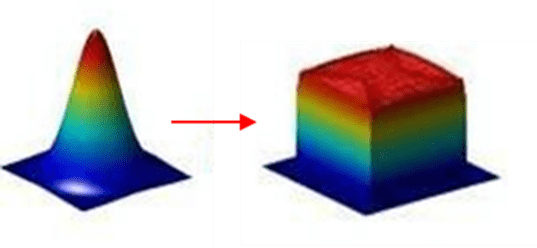
Figure 1: Gaussian Beam Spot Reshaped into a Top-Hat Beam with Uniform Energy Distribution and Steep Edges
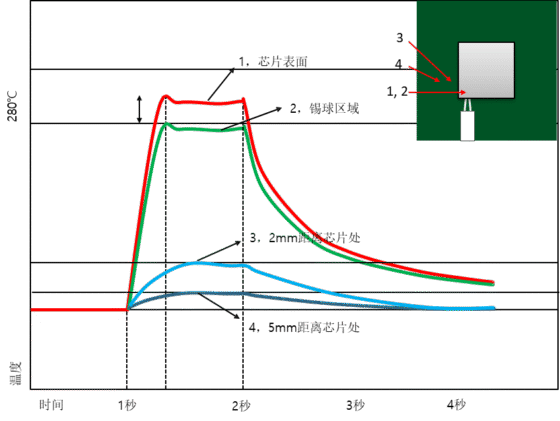
Figure 2: Test of Temperature Effects Around the Chip
B) High-Speed Closed-Loop Temperature Control
Temperature (i.e., the temperature curve) plays a critical role in bonding quality (see Figure 3). In practical applications, due to the laser’s high speed and ability to generate massive energy in short periods, temperature control systems must respond within an extremely short timeframe, with a recommended frequency of around 10 kHz. Moreover, the accuracy and repeatability of temperature control are vital. Most systems rely on infrared radiation for temperature measurement, but infrared signals are susceptible to environmental noise. Thus, the temperature measurement system must be highly reliable to process these signals effectively, ensuring accurate and consistent temperature control. Additionally, since different chips have varying emissivities, the temperature control system must adjust in real time. Finally, a coaxial laser head is recommended to precisely integrate laser, temperature control, and vision systems, achieving superior performance (see Figure 4).
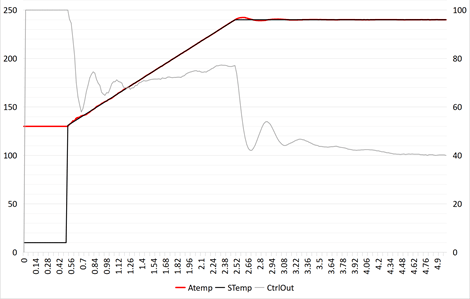
Figure 3: Real-Time Temperature Curve in High-Speed Closed-Loop Temperature Control
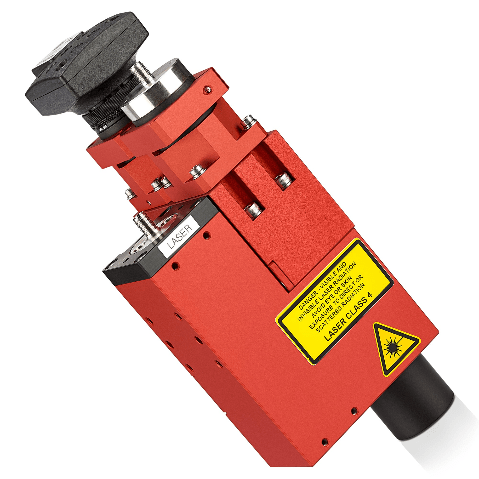
Figure 4: Coaxial Laser Head
C) Process Control
Process control is of significant importance in laser-assisted bonding. Different chips have distinct requirements for heating rates (heating curves), cooling rates (cooling/annealing curves), and bonding durations. This necessitates real-time, efficient control over the entire process. By integrating technologies such as AI, relevant process data can be analyzed and processed to further optimize parameters and enhance bonding quality.
III. Advantages of LAB Technology
Compared to traditional reflow oven processes, LAB technology can accommodate thinner, denser, and larger chips (consistent with the trend of future advanced packaging). It also delivers higher bonding quality, lower thermal stress, no impact on the surrounding environment, and greater energy efficiency, smaller footprint, and lower operational costs (see Figure 5). When compared to thermocompression bonding, laser-assisted bonding (LAB) offers advantages such as higher efficiency, lower energy consumption, and self-correction capabilities during non-contact bonding (see Figure 6). Additionally, its applications are more flexible: lasers can irradiate chips from above, below, or both simultaneously.
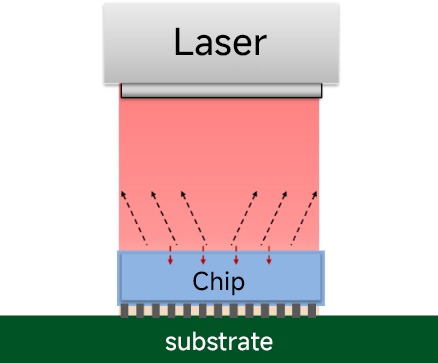
Figure 5: Schematic Diagram of Laser-Assisted Bonding
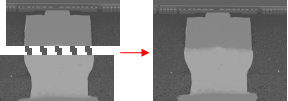
Figure 6: Self-Correction of Bonding Position
Across key performance metrics—including thermal conductivity, heat-affected zone, signal loss, processing precision, mass production yield, and process speed—LAB technology outperforms traditional processes (specific data are shown in Table 1). This indicates that LAB technology significantly enhances optical module performance and production efficiency, making it a promising candidate to become one of the mainstream processes in future optical module manufacturing.
| Parameter | Silver Epoxy Mounting | Eutectic Soldering | Thermocompression Bonding | LAB |
| Thermal Conductivity (W/(m·K)) | 20-30 | 80-100 | 100-120 | 80-150 |
| Heat-Affected Zone (HAZ) | >500μm | 300-500μm | 100-150μm | <50μm |
| Signal Loss @ 112 GHz | >3dB | 1.0-1.5dB | 0.8-1.2dB | 0.5-1.0dB |
| Processing Precision (μm) | ±50 | ±10-20 | ±10 | ±1-5 |
| Mass Production Yield (%) | 92 | 95-98 | 97 | 99 |
| Process Speed (Points/Second) | 10 | 20 | 50 | 50-200 |
Table 1: Performance Comparison Between LAB and Traditional Processes
IV. Case Studies
1.An overseas company applied LAB technology for bonding in its chip manufacturing process. After picking up the chip and placing it on a silicon wafer, the laser system heated and bonded the chip from the bottom of the wafer. This process significantly improved bonding efficiency, had no impact on surrounding components, and effectively enhanced product quality and production efficiency (see Figure 7).
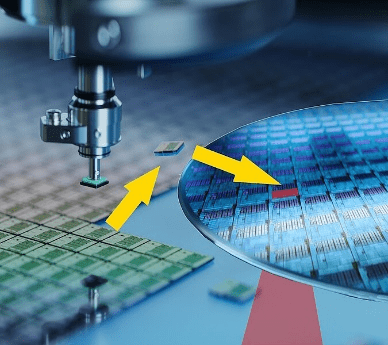
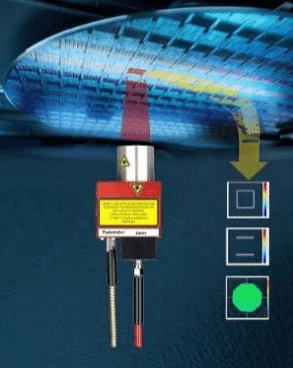
Figure 7: Bonding Using LAB Technology During Chip Manufacturing
2.A domestic company applied LAB technology when bonding flip chips to substrates in the manufacturing of high-speed optical modules (see Figure 8). Practical results show that LAB technology can drastically boost bonding efficiency and offers advantages such as high processing precision and minimal warping stress, thereby significantly improving product yield rates, reducing production costs, and enhancing the company’s market competitiveness.
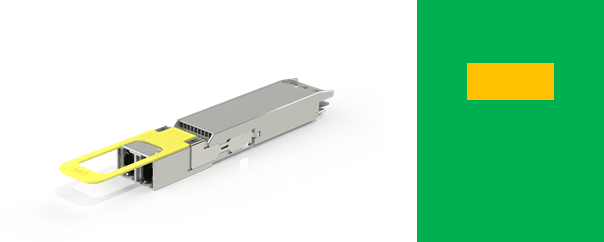
Figure 8: Applying LAB Technology to Bond Flip Chips to Substrates in the Manufacturing of High-Speed Optical Modules
V. Conclusion: LAB Defines the Manufacturing Paradigm of the Tbps Era
Laser-Assisted Bonding (LAB) technology, with its three-in-one advantages of “precision, efficiency, and intelligence,” has emerged as the core engine driving the evolution of optical communications into the Tbps era. From CPO (Co-Packaged Optics) thermal management to silicon photonics integration, LAB technology has not only effectively addressed the inherent bottlenecks of traditional processes but also opened up new manufacturing pathways for the deep integration of optics, electronics, and computing.
As the demand for AI computing power grows exponentially, LAB technology will play an increasingly critical role in the global semiconductor industry chain, profoundly reshaping the industrial landscape. It is also expected to enable Chinese enterprises to achieve leapfrog development in the high-end optical module market, enhance China’s core competitiveness in the field of optical communications, and provide robust support for the sustained innovation and advancement of communication technologies.
This article is reprinted from the content of the June-July 2025 issue of the journal Step-by-Step New Technologies.
 DYNALAS
DYNALAS